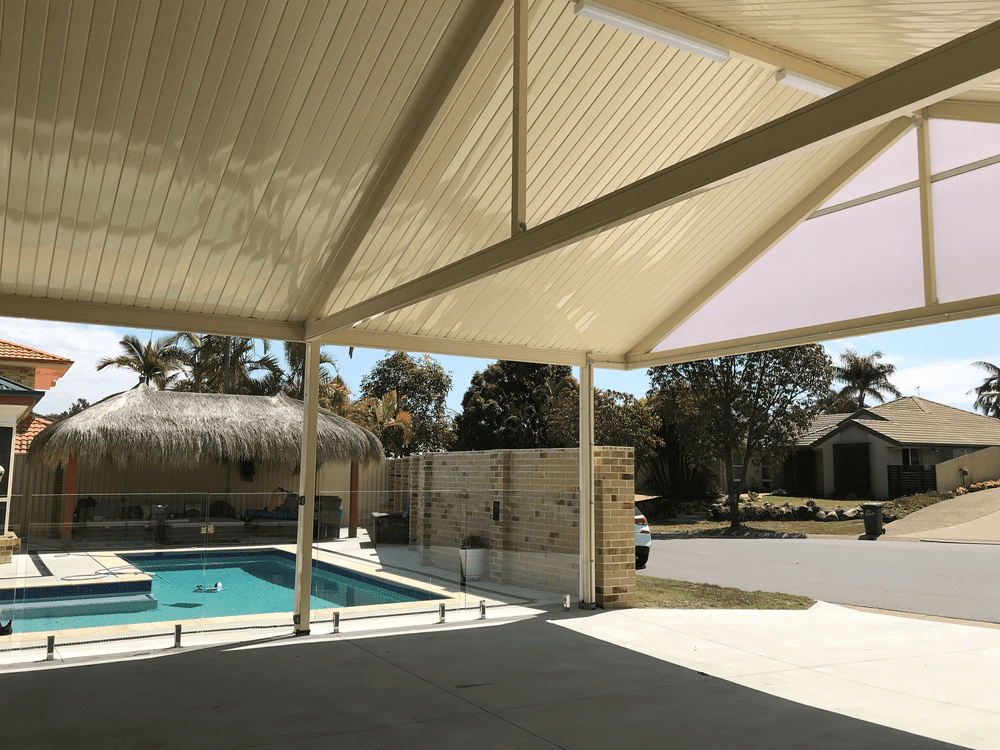Patios are highly versatile spaces. Many homeowners have them installed to maximise the use of their outdoor space. But building a patio is also an excellent way to upgrade your home, as it improves the look of the home and increases the value of your property for a relatively small investment.
If you’re thinking about having one installed, building materials like insulation might be on your mind right now. Just Patios will save you the trouble and go over the basics of insulated and non-insulated roofing material for your patio building project.
Basic Design: Insulated vs Non-Insulated
An insulated patio can help keep the heat away from the space and is ideal if you want to add enclosures to it. Insulated roofing is also beneficial if you are planning to install ceiling lights and fans in the area as it provides the best protection for the electrical cabling and conceals them.
The insulation on the roofing material creates a thicker profile, which is great for reducing environmental noise and is quieter in heavy rain. The thick layer of heat protection allows you to enjoy a more comfortable time outside and gives you the freedom to enjoy your space, rain or shine.
A non-insulated patio can also protect your space from heat and rain. The non-insulated roofing is a single-skin, lightweight material which is ideal if you have limited headroom in the building space. It is a cost-effective alternative and comes with more colour options than insulated panels do.
Both roofing types can protect the space from heat and rain and can be used for flat or gable designs.
Height Considerations: Available Vertical Space and Existing Gutter Line
Most patios follow the height of the existing gutter line. This creates a seamless connection between the main building and the annex.
However, when following the existing gutter line, the final ceiling height must be considered, especially when building with insulated roofing. One way to increase the height of the room is to build a flyover patio. It’s possible, provided that there is enough unobstructed vertical space to do so. Make sure your desired ceiling room is taken into consideration before deciding on the roofing material for your patio.
Space Functionality: Combining Indoor and Outdoor Spaces
Some modern patio designs incorporate indoor and outdoor spaces. These patio designs are enclosed and are separated from the main indoor space with movable dividers. The patio can function as an outdoor room when enclosed or as an extension of the indoor space when the dividers are removed.
When used as an extension of an indoor space, an insulated patio may be more beneficial as it is equipped with materials that can prevent heat from penetrating the patio area and reaching the main indoor space. The insulation can also maintain a comfortable indoor temperature when the two spaces are combined.
All in all, both insulated and non-insulated patios provide shade from the heat and protection from the rain. Choosing the best material for your patio mainly depends on the available building space in your property and how you plan to use the space. Whether you pick an insulated or non-insulated roofing material, you can expect to get optimum results when you build with Just Patios.
Turn to the Patio Experts for Help
Just Patios can tailor materials based on your space, needs, and budget. So whether you decide to build an insulated or a non-insulated patio, we can build one that’s just right for you. Give us a call on 1300284531, so we can discuss the best building option for your patio needs today.
Alternatively, you can click here to fill out a secure form or use the clickable phone number on the page to dial straight to us.
